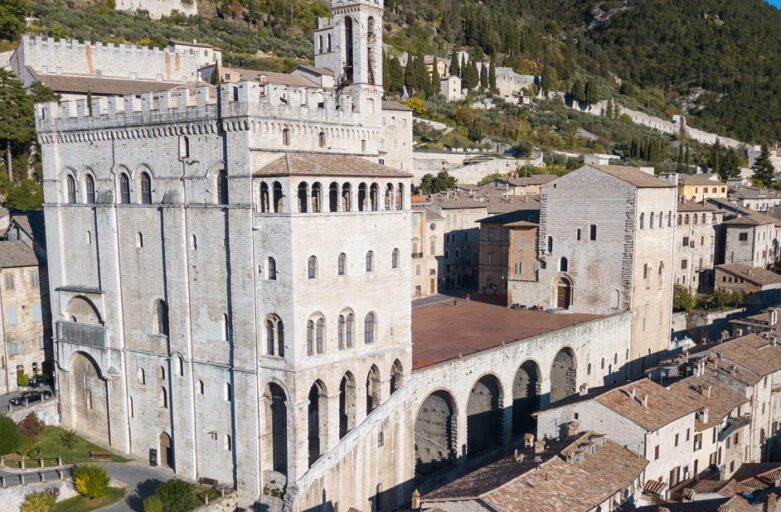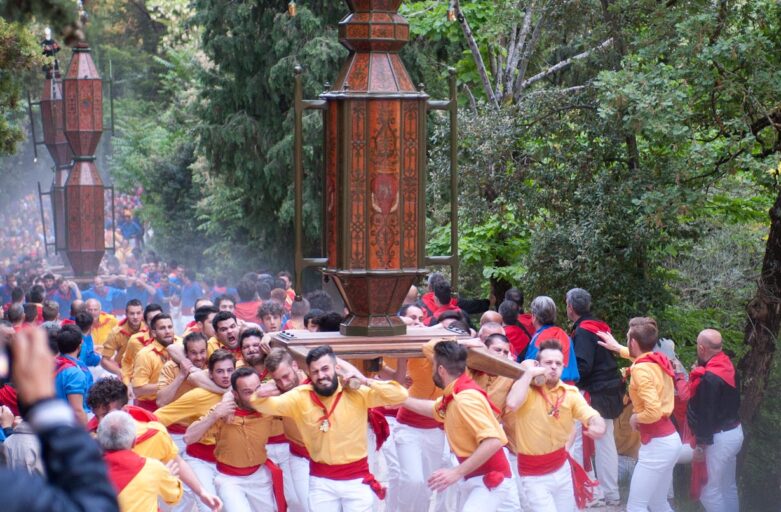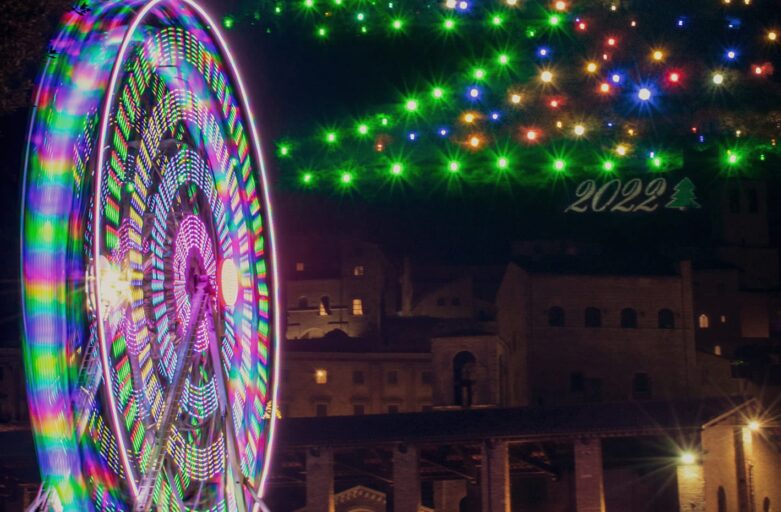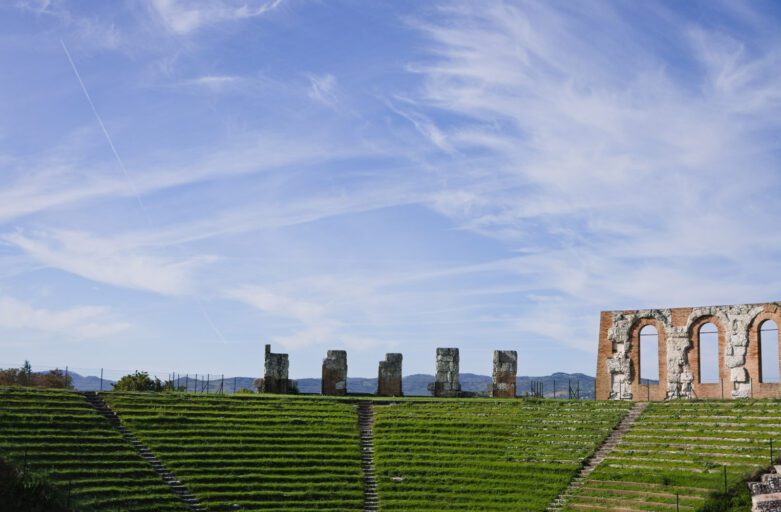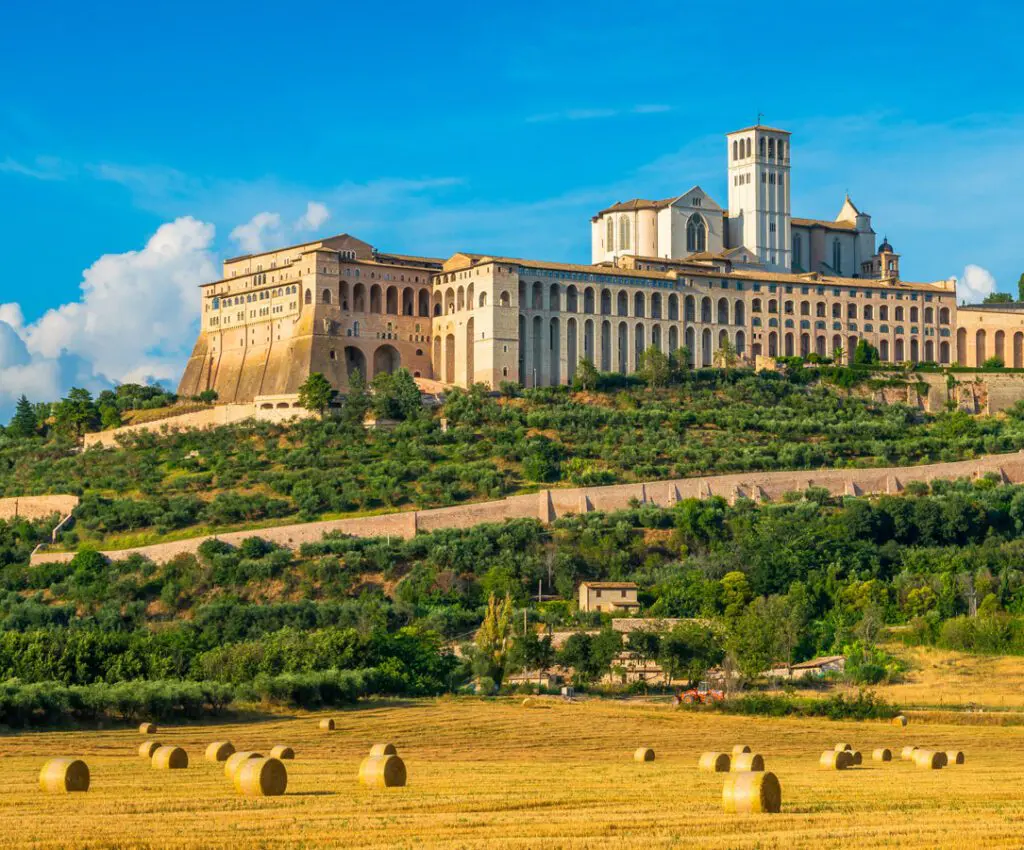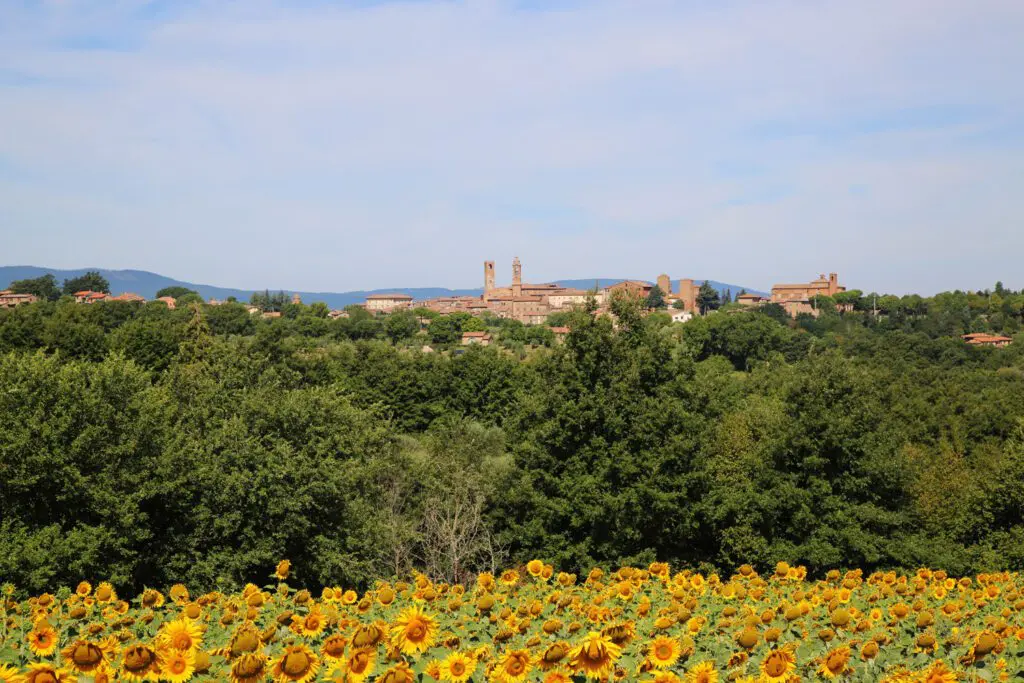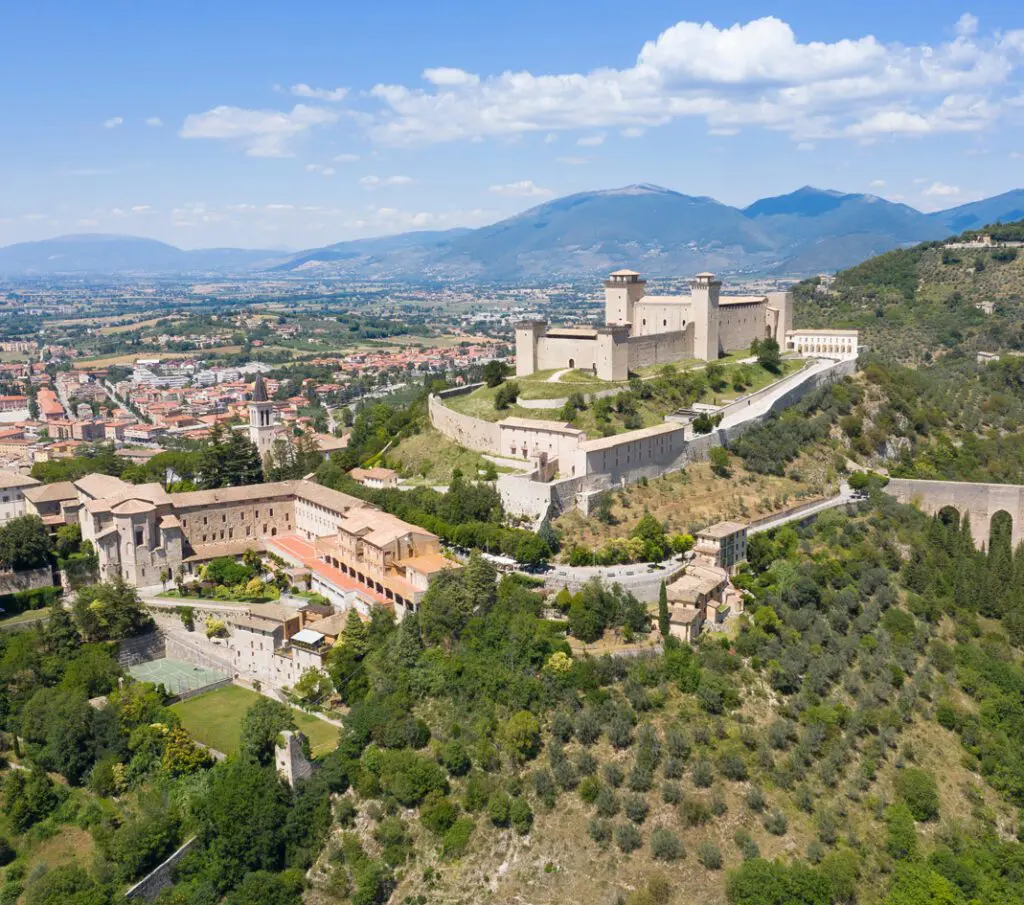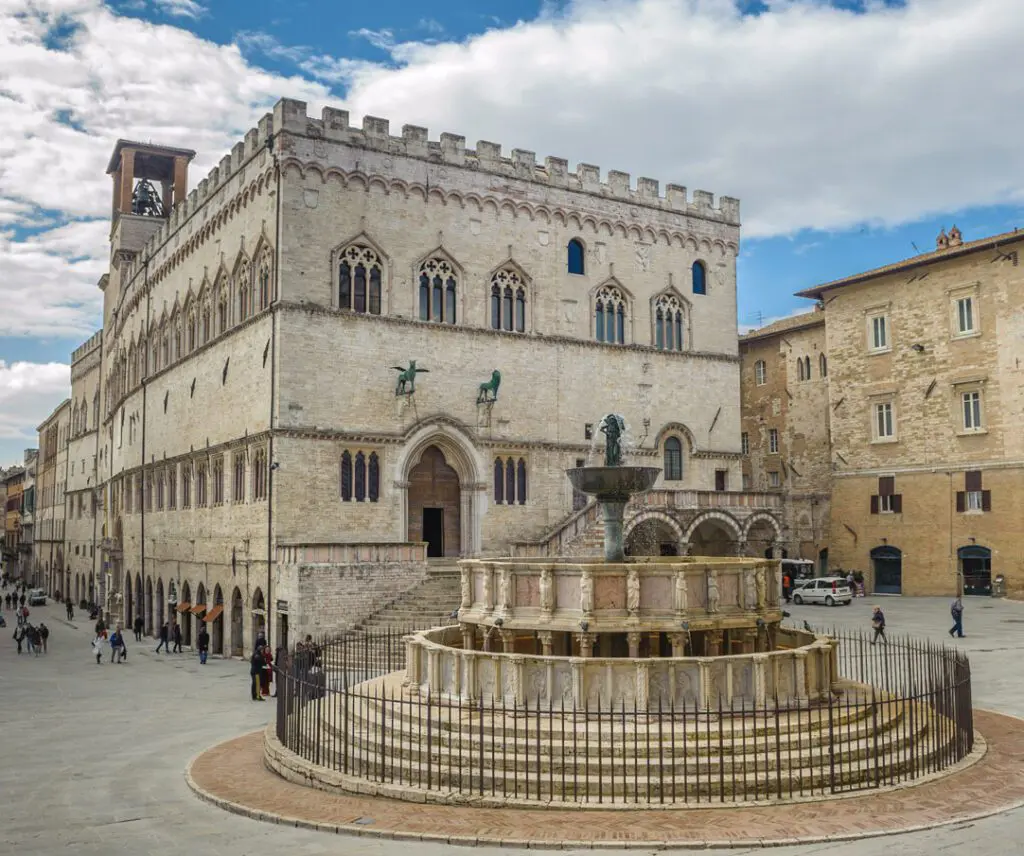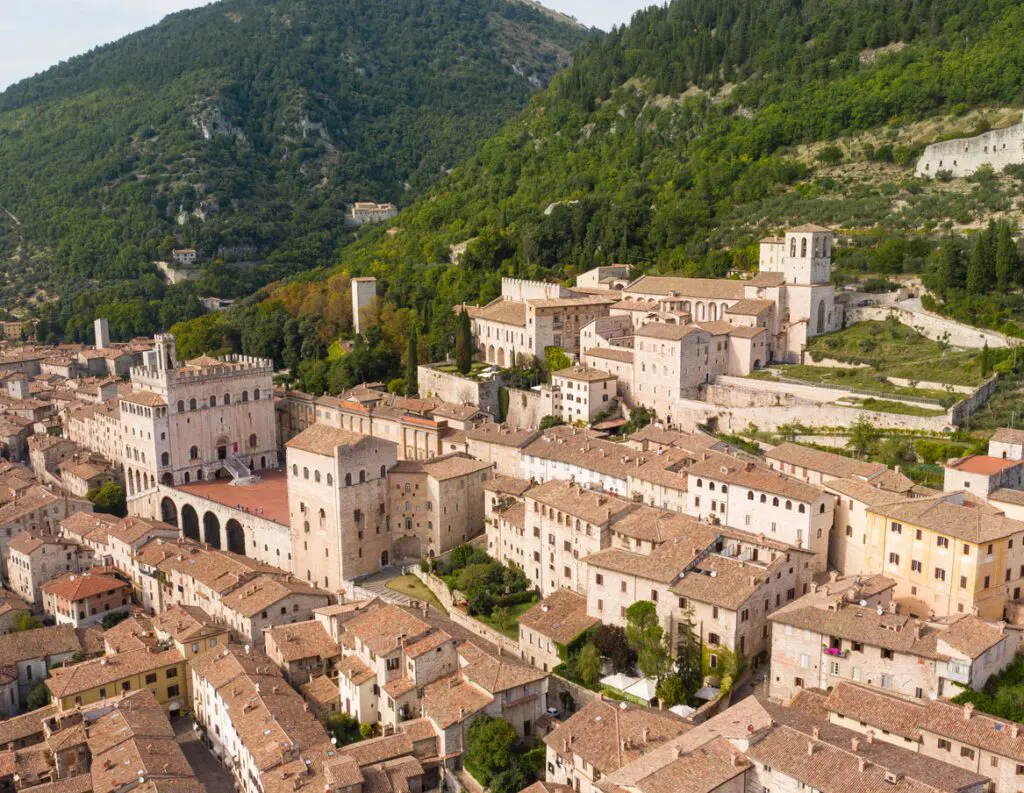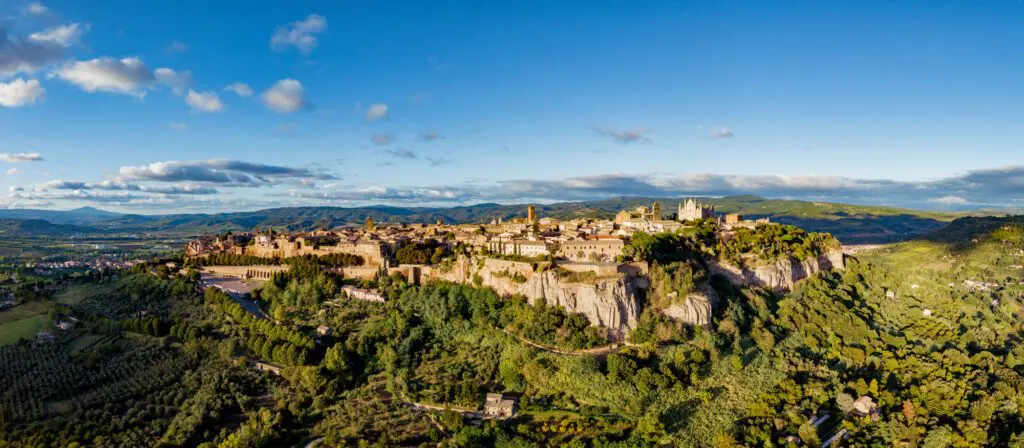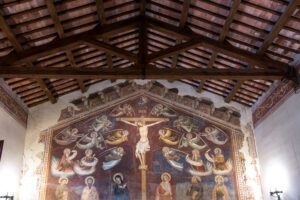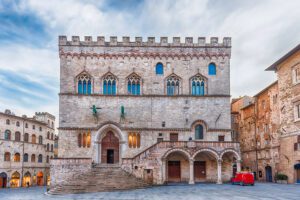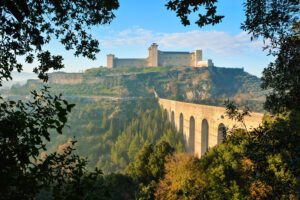A Decentralized Center
Gubbio rises at the foot of Mount Ingino with a strong self-consciousness. Framed within a luxuriant Nature, rich in woods and trails, it is considered one of the most beautiful Medieval towns in Italy. A major feature of the old town center are the buildings in calcareous stone, that gives them a typically gray color. Stones that still envelope the secrets of past masters and masterpieces while filling one's eyes and soul with awe and wonder.
What we are looking at is not the original town center, though.
In the first half of the 14th century, Gubbio became one of the main manufacturing centers in Central Italy, providing itself with top skilled artisans. At that time, the town center – that had been the seat of an ancient Lombard Court – was located in an upper area, called Corte Vecchia, precisely “the Old Court.” Cut through by a moat, that nucleus was actually separated from the four town quarters. Putting it otherwise, the “center” was excessively far from the beating “heart” of the active community.
So, in order to meet the contemporary economical and governance needs, the leaders of Gubbio's free Commune decided, starting from 1321, to build a new town center – giving rise to one of the boldest examples of city planning during the Middle Ages in Italy.
Gubbio Downtown, Junior
The new downtown was planned as shifting downhill to a more central area near the artisans' (head)quarters. They built Piazza Grande, i.e. the Main Square, the Palace of Consuls and Palazzo Pretorio, i.e. the Administration Palace, so as to border with the four downtown neighborhoods, that were and are named after the Saints Julian, Martin, Andrew, and Peter. This became the gathering point for the whole town, both conceptually and visually so. To carry out the project, they had to modify the then natural ground in the upper area, first of all by creating an embankment, while in the lower area they envisioned a hanging square, some 60 meters (180 feet) long. The wall under the square, and supporting it, rises some 17 meters (50 feet) over the underlying street.
A major role in realizing the complex with Piazza Grande and its two palaces was played by a local architect, Matteo di Giovannello a.k.a. “Gattapone.” Also renowned for having designed the imposing Albornoz Fortress in Spoleto, he is mentioned as the geumetra (geometra in current Italian: surveyor) in documents of the year 1349, referring to the making of the square.
Piazza Grande, supported by majestic arches and vaults, relies on a system of buttresses, as well as a set of twelve lower and twelve upper compartments. It visually follows the ascensional motion of the Palace of Consuls. This leads the observers to raise their eyes higher and higher, and dive into the past while at the same time feeling hanging in space.
Square Impressions
Piazza Grande is among the biggest existing hanging squares. It can be reached either on foot by going up the streets of the Medieval town center or by taking the elevator in Via Baldassini. Once in the square you will be marveling at its largeness and airy atmosphere, and even more so at looking at the landscape from the terrace. This, in fact, is surely the best place where to admire the panorama. Your eyes will first meet the underlying park (Giardini pubblici) and the beautiful Church of Saint Francis, of the late 13th century. Shifting your viewpoint all around, you will then notice the harmonious ensemble of roofs and buildings in the old town neighborhoods. They will be changing colors as the hours pass, from bright white and yellow in the morning and early afternoon to the rosy or orange nuances at sunset. The view will finally open onto the green hills and countryside in the background.
Feasts & Events
Piazza Grande also provides the setting for a festival called Festa dei Ceri (Ceri here means 12-foot-high candle-like objects in wood), that takes place on May 15 to honor the town's patron saint, Bishop Ubaldo. On the occasion, all people in Gubbio wear the traditional colors of the day, and take excitedly part in the alzata (raising) of the three Ceri from a horizontal to a vertical position, with the ritual “pitcher throw” and then the race start – the Ceri are transported on the shoulders of groups of crazily running men.
Another event that takes place in the main square, on the last Sunday of May, is the Palio della Balestra (crossbow): a contest in which crossbowmen from Gubbio and Sansepolcro (Tuscany) compete in Medieval costumes. The winner will be the one who succeeds in hitting a target at a distance of some 36 meters (110 feet); he will be rewarded with the Palio, a precious standard designed by a different artist each year. One more thrilling event on the same day is the show of Gubbio's Flag-throwers
A Beloved Actor – and “Priest”
Piazza Grande has still some surprises in store. Walking along Main Street toward the square, you may be noticing a bar called Caffè Ducale; among the tables, one is special – it looks like it had been suddenly left by the customers. There are two coffee cups on it, and a chessboard, a military hat (as of a Maresciallo of the Carabinieri Corps), and a black hat. Whose are those objects? And why are they over there?
The answer will immediately come from anyone who watches Italian TV series: they belong to Maresciallo Cecchini and Don Matteo (Father Matthew), the latter role being played by Terence Hill (real name: Mario Girotti), who became a star thanks to the spaghetti-western movies in the 1970s. Gubbio provided the setting for the first eight seasons of the series.
Precisely Caffè Ducale – as the table witnesses – was the two characters' favorite place for their chess games, during which they exchanged data about town mysteries and investigations. The bar, moreover, has a collection of photos, inscriptions, objects and autographs of the actors, to the extent that it has become a sort of historical archive for fans.
Another place in the square where TV shots for Don Matteo were taken is Palazzo Pretorio, just in front of the Palace of Consuls: it appeared as the headquarters of the Carabinieri Corps, although it actually is the Town Hall.
INFO
Location
Piazza Grande, 06024 Gubbio PG
Contacts
info@secretumbria.it
